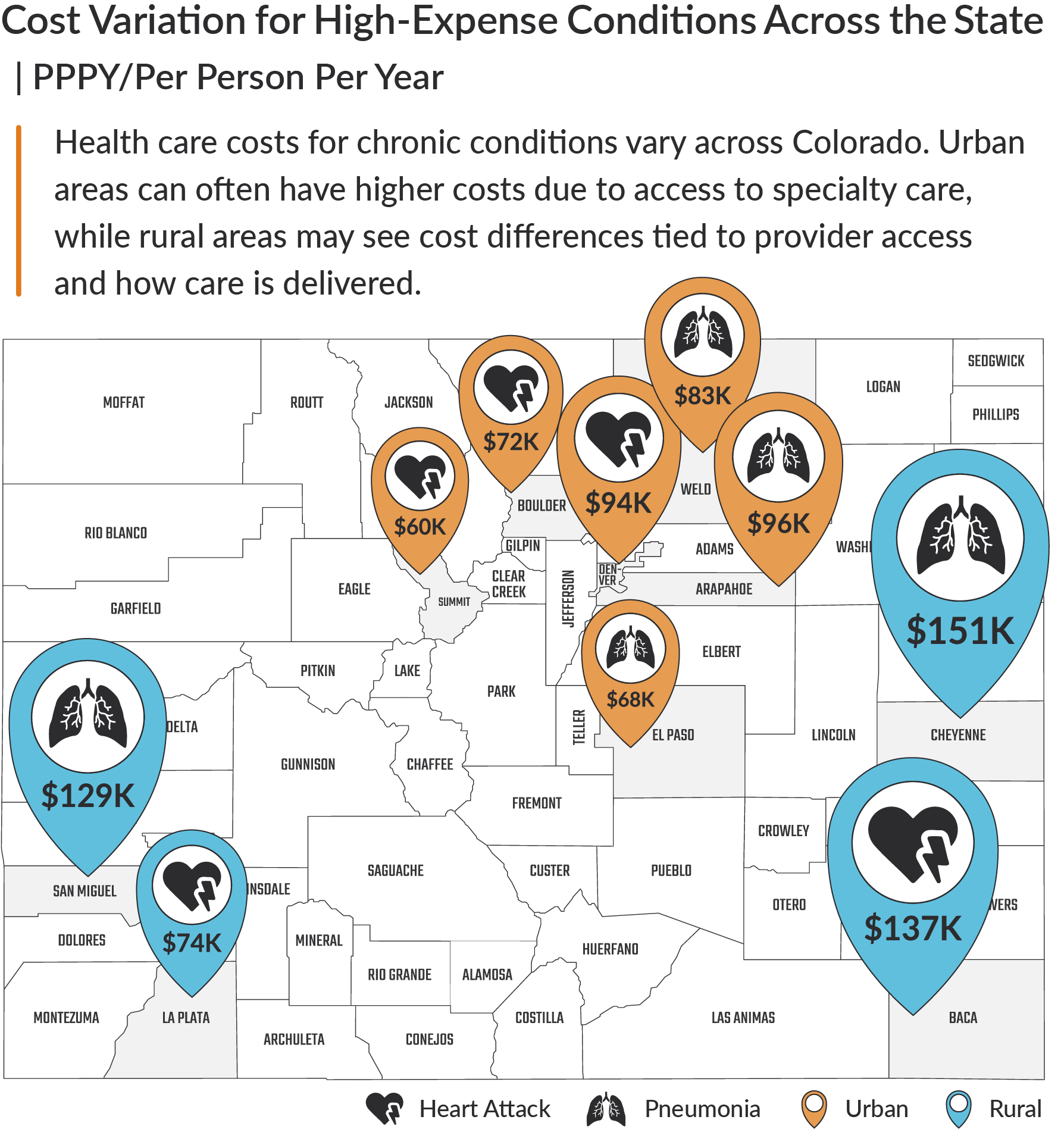Chronic conditions, like heart disease and diabetes, are more than just personal health challenges—they’re among the leading causes of death and disability in the United States. They reduce quality of life, drive up health care costs, and place a heavy burden on health systems nationwide.
CIVHC’s Chronic Conditions Analysis sheds light on 30 prevalent chronic diseases from 2017 to 2023 claims data in the Colorado All Payer Claims Database (CO APCD). This analysis reveals trends in how common these conditions are, the average annual cost of care and total spending for individuals living with at least one chronic illness. Equipped with this comprehensive information, communities, researchers, and health care leaders can make informed decisions that improve care, reduce costs, and support healthier lives across Colorado.
This analysis includes an individual downloadable file for each of the following chronic conditions:
- Acute Myocardial Infarction
- Alzheimer’s Disease
- Anemia
- Asthma
- Atrial Fibrillation and Flutter
- Benign Prostatic Hyperplasia
- Cancer, Breast
- Cancer, Colorectal
- Cancer, Endometrial
- Cancer, Lung
- Cancer, Prostate
- Cancer, Urologic (Kidney, Renal Pelvis, and Ureter)
- Cataract
- Chronic Kidney Disease
- Chronic Obstructive Pulmonary Disease
- Depression, Bipolar, or Other Depressive Mood Disorders
- Glaucoma
- Heart Failure and Non-Ischemic Heart Disease
- Hip/Pelvic Fracture
- Hyperlipidemia
- Hypertension
- Hypothyroidism
- Ischemic Heart Disease
- Non-Alzheimer’s Dementia
- Osteoporosis with or Without Pathological Fracture
- Parkinson’s Disease and Secondary Parkinsonism
- Pneumonia, All-cause
- Rheumatoid Arthritis/Osteoarthritis
- Stroke/Transient Ischemic Attack
- Individuals with one or more chronic conditions
- Individuals with two or more chronic conditions
Use Cases
- Use condition and cost data to design benefits that address employee health needs, reduce avoidable spending, and support targeted wellness programs.
- Use statewide data to inform chronic disease policy, guide funding decisions, and evaluate health program effectiveness.
- Identify where chronic diseases are most common, support prevention strategies, and prioritize areas for community outreach.
- Study trends in condition prevalence and spending, compare outcomes over time, and assess the impact of health interventions.
- The analysis includes all public and private health insurance payers submitting data to the CO APCD, which represents the majority of covered lives (70% of medically insured) in the state. The CO APCD does not include roughly half of the self-insured employer covered lives and does not include federal programs such as Tricare, Indian Health Services and the VA.
- Total spending refers to all payments made for health care services and prescription medications for individuals with a chronic condition. This includes costs related not only to the chronic condition itself but also to any other health care services received. For example, if a person with diabetes undergoes a knee replacement surgery, the total spending displayed for individuals with diabetes will include their costs associated with both managing diabetes and the knee replacement procedure, as well as any additional spending during the year for other preventive care.
